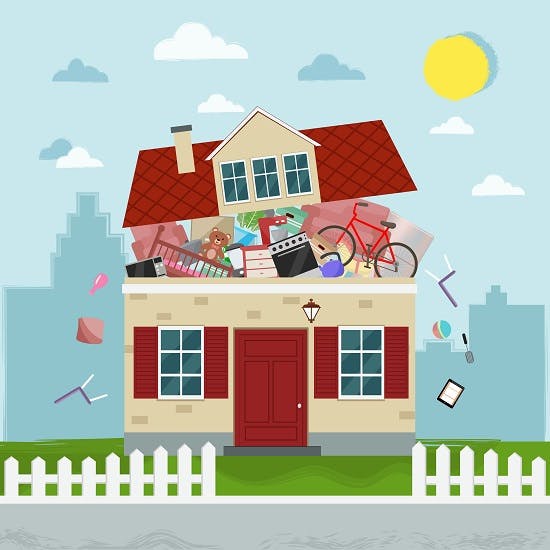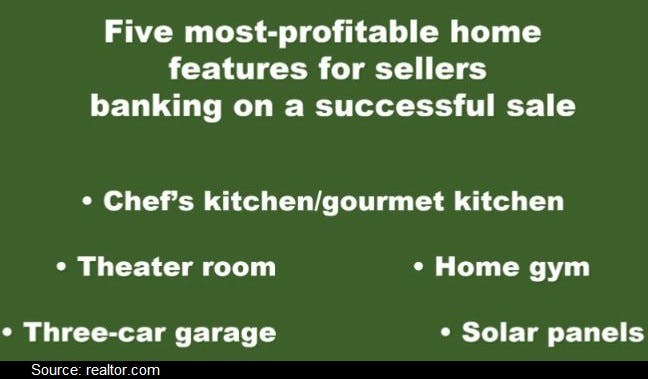You received the pre-inspection report and have developed a honey-do list in preparation to putting your home on the market. As we hinted in a recent blog post, the cost of following through with the inspector’s recommendations come with up-front expenses followed, in most cases, by a quick return on your investment.
Now is the time to treat your home’s “ailments” with a dose of sweat equity. Nationally, homeowners are spending an average of $12,361 on remodeling a year (not just for repairs to sell the home). Make sure you complete the must-fix items and have your real estate broker help with the cost-benefit analysis of making the nice-to-have improvements suggested by the inspector.
Your broker has already walked through the home and will likely raise a couple more concerns, including additional suggestions to further improve the abode. Sellers should be prepared for a little constructive criticism.
Brokers – myself included – will offer a list of contractors that may be able to help tackle the bigger jobs, with the aim to improve curb appeal and, the best part, add market value to the home. Suggestions could include removing or repairing furniture, storing personal items and sprucing up the front yard. [Here’s a downloadable Seller’s Checklist with ideas to repair, spruce up and declutter the home.]
If the home is vacant, your broker will give you the option of investing in a home-staging service to make the place appear lived in – but not cluttered. Sellers typically pay for this service and stagers do wonderful work.
Put yourself in the shoes of a Seattle-area home buyer for a moment. Walk around the outside of the home (a house, co-op or condo building) and try to imagine what the buyer sees, hears and smells. Seriously! Use your senses to consider if a buyer would enjoy the experience or find fault.
Okay, now get out of those buyer’s shoes and get to work on making the home – inside and out – look better than it does today. How?
Clear the clutter – Buyers will look in every closet of every room. Don’t stuff your stuff (pun intended!) in a closet or drawer and assume “out of sight out of mind.” Declutter as much as you possibly can – donate, throw away, give to a friend, toss it in a separate storage unit – to help accentuate the storage possibilities for buyers. Time is of the essence to get the home prepared for market. Don’t ruminate for days about what to do with your Christmas tree ornament collection, balls of knitting yarn, or that 15-year collection of National Geographic magazines. Make decisions about what to do with these items – even if temporarily to remove them from the home – and move on to the next item on your to-do list. Buying a few plastic storage containers with handles can be a good investment, as long as you don’t pile them in plain view for buyers to see.
(Of course, don’t be too quick to toss out or donate something to Goodwill that turns out to be a family heirloom or is rare and worth thousands of dollars.)
Maxing the possibilities – Maximize the home’s market value by minimizing larger items in the home. Think about what a buyer wants to see – the possibilities! More space can allow them to visualize how they could live in the home. (Don’t go crazy, of course, and remove a bed or sofa. Consider those items as “anchor furniture” that should almost always be part of a living room or bedroom.) Keep personal items such as passports, cash, jewelry, personal photos and credit cards stashed away in a safe or on your person.
Brighten up the home – This goes hand-in-hand with inspection-related repairs. “Brighten” can mean softer lighting or a fresh coat of paint. A lot can be said for investing in paint, brushes and a weekend paint party with your friends (or have one or two rooms professionally painted). Go from room to room to see how each one can be spruced up, from door or cabinet handles to new bed covers or pillows. The home can come to life with a small investment from Bed, Bath & Beyond (belief!).
Change the layout – Look at the main rooms – primarily living and dining – to see if rearranging the furniture will increase visual space or improve the flow of walking from room to room. You don’t need to put old Betsy, the favorite recliner, right in front of the television when it blocks a natural path to the next room.
Outside in – Exteriors make a critical first impression to a buyer. Make the home look welcoming by, well, laying out a new Welcome mat or adding a fresh coat of paint on the door. Mow and water the lawn, weed the flower beds and consider adding potted plants to the entry or along the path to the front door. The more color the better, especially when people walk or drive down the street and take notice.
In addition to the downloadable Seller’s Checklist, I will ensure my seller will receive a customized list that will account for my findings in the home and suggest remedies. (Sorry, having me paint your living room is not one of the remedies!)
This is an important step to preparing your home for buyers. Please don’t take it lightly or buyers will find issues with the home and move on to another.
Once the home is in pristine condition and ready for its close-up, we will move on to the next step in the process: hiring and scheduling a professional photographer to snap it all together.





